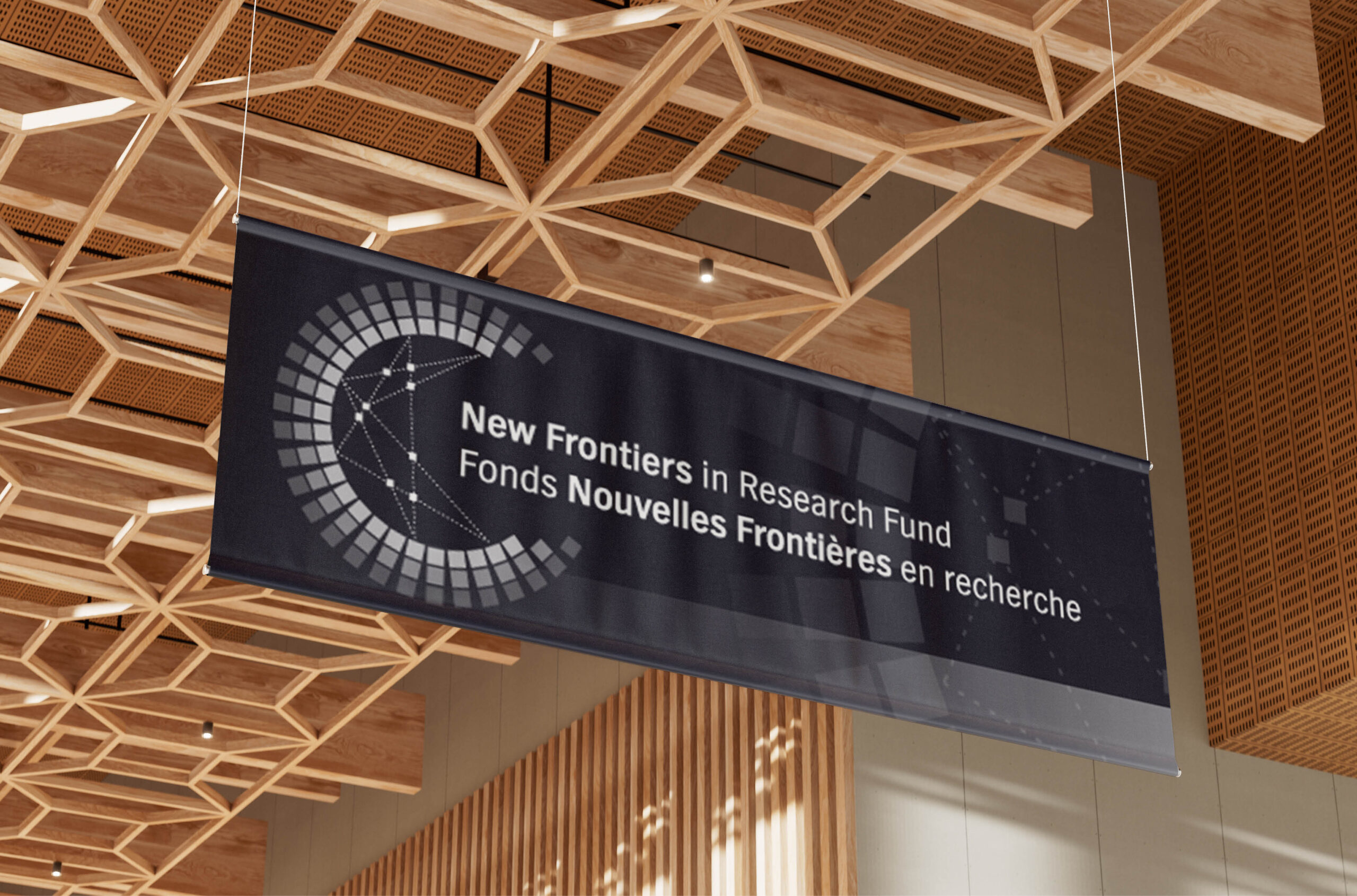The New Frontiers in Research Fund: peer reviewers’ perspectives
Often, interdisciplinary research projects don’t fit into the standard funding competition requirements, but the NFRF values true interdisciplinarity.

I’m tired of being rejected by SSHRC and CIHR for not fitting correctly with either. I keep hearing that interdisciplinary approaches are necessary to solve complex problems, but then Tri-Council doesn’t fund interdisciplinary research. How do I persuade a SSHRC or CIHR committee that my project is a perfect fit with their mandate?
Anonymous, Sociology
Dr. Editor’s answer:
Funding agencies’ notoriously low success rates for interdisciplinary applications are not specific to tri-agency funders: they’re a problem for funding agencies internationally (Bromham et al., 2016), and we’ve known about this issue for decades (Nelson 1980). And while CIHR’s Project and SSHRC’s Insight programs (as well as NSERC Discovery) each have a tri-agency Interdisciplinary Peer Review committee – convened in response to the Naylor Report – I’m hearing through grapevines that the success rates on those committees tend to be lower, on average, than the success rates in the discipline-specific committees.
Integration and implementation sciences researcher Gabriele Bammer has outlined the possible reasons for the low success of interdisciplinary grant applications, including the possibility that “that interdisciplinary research proposals are not as good as those which are discipline based” (2016) – which I doubt is true, and I suspect Dr. Bammer does too, but part of her point is that we don’t know why exactly this effect persists across international borders and funders.
Given your own experience of rejection, and given the anecdata I’m hearing, I wonder if you’d consider turning away from SSHRC and CIHR, and applying in 2025 to the New Frontiers in Research Fund. I’m expecting to see the deadlines for applications to their hallmark competitions, Exploration ($125K/year for two years) and Transformation ($4M/year for six years), to be announced in the second half of 2025. Looking at some of the NFRF’s previously funded projects, I suspect they’d be particularly interested in funding projects that bring in a social sciences and humanities angle, as those seem, in my entirely unscientific opinion, to be underrepresented, if the titles of projects and home departments of PIs are anything to go by.
The NFRF’s interdisciplinary focus isn’t the only thing that sets it apart from the tri-agency stalwarts, though. To learn more about the different norms and expectations of NFRF competitions, I spoke with 18 former NFRF peer reviewers and collected their perspectives in this 18-page PDF. They told me:
- NFRF peer reviewers have high standards for the integration of equity, diversity and inclusion in research design
“Compared to the other tri-agency funders, in NFRF, the applicants need to have EDI in the research project and the team. If there’s a failure on EDI, the rest of the proposal will fail – even if it’s great research. In NFRF, the emphasis on EDI is a hundred times stronger than in CIHR or SSHRC.”
While equity, diversion, inclusion, access, Indigenization and decolonization are being increasingly considered across tri-agency competitions, these concepts haven’t yet found their way into the evaluation criteria for their hallmark competitions; instead, the need to address EDI remains an unwritten rule, and is a component often only discussed in the training plan.
In contrast, the NFRF’s merit indicators for the Exploration and Transformation competitions specifically assess “equity, diversity and inclusion in research practice,” considering the research team, your practices, and your plans for implementing and evaluating your work as related to EDI.
If your previous grant applications haven’t addressed EDI – or if your plans have been limited to requiring trainees to take institutional training – then you’ll need to catch up on the best practices. You’ll also want to do some research into which groups of people are underrepresented your discipline. In sociology, Margolis & Romero (1998) can give you the historical context, and then Romero (2017) provides an update; following that, consider diving into Social Problems’ 2017 series Essays on Voices from the Margins: Inequalities in the Sociological House, as well as the more recent Spalter-Roth et al. (2018), Wingfield (2020), and Sablan & Mahoney (2022).
For those reading this piece who aren’t in the same field as our letter-writer, the key word I’ve found most helpful when looking for research on EDI in specific disciplines is “underrepresented” – unfortunately, there is a dearth of research on underrepresentation in a range of disciplines, particularly in a Canadian context.
- They want to see plans for high-risk, high-reward projects
“NFRF is about crazy work. It truly is. It’s about the ideas that nobody else would fund because they’re too risky, they’re too audacious.”
It’s hard to get risky research funded in conventional funding schemes, as Boudreau et al. (2016) have experimentally demonstrated. Not so with NFRF, which is explicitly seeking to fund proposals that “[defy] current paradigms, and bring disciplines together in unexpected ways and from bold, innovative perspectives” (see Merit Indicators).
If you have an idea for a project and you’re not yet certain whether it can be executed – that project might be a good candidate for the NFRF.
For your project to be ranked highly in an NFRF competition, you’ll need to take an approach that brings together the methods and perspectives of at least two widely divergent disciplines, either by developing new methods or by applying one discipline’s methods to a different discipline’s field. NFRF Exploration and Transformation projects need to have a pair of Co-PIs.
- They are looking for truly interdisciplinary approaches
“Interdisciplinarity is so important in the NFRF. You can’t do inter-subfield-of-the-same-discipline-arity.”
Here’s where your expertise as an interdisciplinary researcher has the potential to come to the fore, dear letter-writer – but only if you truly stretch beyond the conventional.
Here’s an exercise: jot some keywords from your program of research in the middle of a piece of paper. Then, draw six lines extending outwards in different directions from your keywords pointing to the following disciplines:
- Social sciences
- Humanities
- Natural sciences
- Engineering
- Health sciences
- Medicine
Start with the discipline that seems furthest from your field. What niches, subfields, areas, or specializations in, say, engineering might also connect with your keywords and area? What areas of medical research? Don’t focus on the social science and humanities – instead, brainstorm broadly. If there was some kind of physical tool that would be of value to the people you care about, the challenges they face, what might that be? Who might know how to build it? And what if it wasn’t a tool, but a new piece of legislation, or a systematic improvement? Who could help you to develop it and ensure it reaches the right audiences?
After you brainstorm potential Co-PIs across fields, connect with someone in your network who you trust, whether that’s the research development officer in your institution, a well-connected colleague, or the partner of dog owner who you frequently run into at the park. It’s time to start sending emails and arranging coffee meetings.
So, does the NFRF sound like it might be a better fit for your next research project than the existing tri-agency funders? If so, now’s a good time to start chatting with potential collaborators from wildly different fields from yours.
Download my free 18-page PDF: Peer Reviewers’ Perspectives: NFRF, and I’ll also send you – later this year, when they’re ready – my collections of Peer Reviewers’ Perspectives on the CIHR Project, SSHRC Insight and NSERC Discovery competitions.
Featured Jobs
- Sociology - Professor (Quantitative Data Analysis Methods and Social Statistics)Université Laval
- Psychology - Assistant ProfessorSt. Jerome's University
- Biochemistry, Microbiology and Bioinformatics - Faculty Position (Microbial Systems Biology, Omics Data Analysis)Université Laval
- Geography - Assistant Professor (Indigenous Geographies)University of Victoria
- Business - Assistant Professor (Digital Technology)Queen's University
















Post a comment
University Affairs moderates all comments according to the following guidelines. If approved, comments generally appear within one business day. We may republish particularly insightful remarks in our print edition or elsewhere.
2 Comments
Your hyperlink does not work, at least for me, from this section:
Download my free 18-page PDF: Peer Reviewers’ Perspectives: NFRF, and I’ll also send you – later this year, when they’re ready – my collections of Peer Reviewers’ Perspectives on the CIHR Project, SSHRC Insight and NSERC Discovery competitions.
Thank you for your comment Cecilia – the link has been fixed.